A Lot Of People Are Really Scared And Angry Because Of The Results Of The Newest Climate Change Reports
A lot of people are really scared and angry because of the results of the newest climate change reports — as they should be. But I’m already seeing a lot of posts and news reports like “HERE’S WHAT YOU CAN DO TO FIGHT GLOBAL WARMING” and bizarrely enough, the answers are never like “weed out climate change deniers from your government, impose strict new rules for the corporations that are creating most of the emissions, pour government resources into alternate forms of fuel, etc.” It’s always like “carpool to work!”
Look. Of course you should be working to reduce waste in your own life. But let’s not fucking pretend that consumers are the ones who made this mess. You know what another recent study found? Just 100 companies are responsible for 71% of global emissions. If the rest of us stopped ALL WASTE and fucking ascended to a higher plane of existence that no longer requires consumption of any kind, the world would still be absolutely fucked if those 100 companies keep on as they do.
I hate this personal responsibility model when it comes to conservation. By ignoring the actual source of the problem and focusing on individuals instead, guess who gets targeted? The absolute most vulnerable individuals on the planet. When people advocate personal responsibility, somehow they’re never talking about billionaires and their private jets. They’re creating straw bans that will make life more dangerous for people with disabilities. They’re shaming women for using disposable menstrual products. They’re criticizing the poor and destitute for using “wasteful” products because they’re all they can afford. They’re making vaguely eugenic statements about getting people in “third world countries” to stop ~breeding~ so much. It’s monstrous.
Stop shaming consumers for the sins of corporations and their powerful investors. Stop placing the blame at the feet of the people who already have the hardest time getting through life. Do something, and by “do something” I mean buy a reusable coffee cup on the way to fucking vote. Go to a protest. Call a representative. Demand accountability from the people who got us into this mess.
More Posts from Copperfingertips and Others
shopping responsibly
this is a sequel to my other post about alternatives to throwing things away. that post detailed some ways to reduce your waste, but the production, shipping, handling & transportation of new items can also be extremely wasteful & push costs up. obviously there’s no ethical consumption under capitalism & you aren’t a bad person for being unable to “shop ethically,” but some of these ideas can help with personal consumption. here are some tips about purchasing or acquiring goods with minimum environmental impact or just minimal financial impact.
ask around: ask your friends & neighbors if they have the desired item(s) that they are no longer using. this can be handy for most nonperishable goods, especially if you have a cooperative community. the free section of craigslist in your area is a good place to start, or the free section of the nextdoor app; you can also put up an advertisement in nextdoor or a similar app to ask if anyone has what you’re looking for & is willing to give it away.
thrift stores: good for clothing, furniture, & other things. it’s fairly easy to find a local thrift store online, & you never know what kind of treasures are there.
do your research before donating unwanted goods: some thrift stores that depend on donations will give out discounts to donators. you can use this on your next purchase at the store.
reselling sites: if you’re on the hunt for something more specific/that you prefer to be unused (such as makeup), people list all kinds of unwanted gifts & random things on resale sites. ebay is the most famous example, but poshmark, mercari & depop are all more fashion-focused places to get trends at a discount & without directly paying a corporation. thredup is the equivalent of an online thrift store, with more emphasis on basic/classic/affordable pieces. also, check out facebook for sale/trade groups in your area!
farmer’s markets: perfect for local produce. you support small businesses & get food that’s full of fewer artificial additives! warning, though: these can be pricey.
borrowing & renting: if you’re not going to need it forever, then don’t pay a forever price! often local hardware stores have tool rentals, for instance.
barter: trade something you don’t need for something you do. this can easily be another “ask around” one, but there are some websites specifically for swapping makeup, clothes, & more.
local artisans/stores: in the event that you absolutely NEED to buy something new, try getting it handmade or local. etsy is a good online marketplace for handmade goods, & some areas have their own sites/directories. ask around!
make it yourself/repair something: if you need something that you can create on your own (especially from reused materials), then just do it. see if you have a local makerspace, where you can access tools & assistance.
reuse: see if you have anything that would do the job, even if it’s not conventional. as long as it’s safe, you can do some WEIRD substitutions.
reduce: the classic solution, which is just not getting anything new. do you REALLY need another tube of lipstick? more shoes? your 5th jacket this season? i thought not!
edit: dumpster diving & curb picking are valid options as well. you might want to look into the legality of this in your area, but if you’re not afraid of getting your hands dirty it’s great. people throw away things that are still useable ALL the time.
this post isn’t exhaustive, so PLEASE add any websites or ideas that you might have! good luck!!
adults are always talking about how “kids will do anything to get out of school” and okay, first of all that’s not true, but I think we really need to ask why that idea holds so much sway.
children’s brains are hard-wired to take in new information and acquire new skills. consider, for a moment, just how thoroughly our society had to fuck up the concept of education for it to be a normal thing to assume kids are universally desperate to avoid learning.
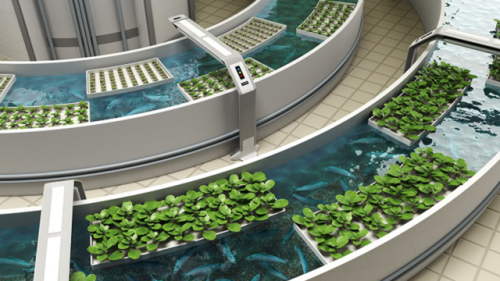
Right to Darkness/Right to Night
Human beings have lived with a relatively strict day/night cycle for as far back as humans have been around. Yes, there was fire, but the rooms were still relatively dim, and outside was almost always just lit by the moon. Daily darkness, where not much could get done has been a part of human culture and biology forever.
Now we have the problem of light polution, where the light of electricity spreads everywhere and then you can’t see the stars at night in the cities. Obviously it’s good that we have electric lights. There are many people who want to be out doing things at night. But it’s also a problem, because for most, nightime is a time of calm and processing the day, and it can be difficult for the human brain to know that it’s time for that to happen if it has too much light coming at it.
I think in Solunarpunk societies, people would have a recognized right to darkness/night, that made itself apparent in the design of light sources and buildings, so that anyone who wanted to could enjoy the dark, cool, and quiet regardless of where they live.
This could manifest as rules about how streetlights can be made, so that the designs that are used are the ones that have the least amount of light seepage
Possibly different light zones, so the bars and clubs and other nightime activity stuff is all in one area, so those people can be safely lit, while other neighborhoods have street lights that only come on if someone is walking there, and are as unobtrusive as possible, so that people can stargaze and sleep in peace.
Inside houses, there might be automatic window darkeners that activate whenever you turn on a light, so the outside isn’t affected, that then turn transparent when the light is off for long enough.
Most houses would have smart lighting with a “night mode” that kept the lighting warmer and dimmer. If you had no lights on, red floor lights will turn on if it senses you moving so you can see where you’re going in safety.
Or maybe people just start using their night vision for more things. People just don’t turn on the lights at night if they don’t have to.
I imagine that in a right to night would also mean that it would be expected that work ends at sunset. People are free to pursue their own passions at night, and are free of daytime responsibilities. No one could pressure someone to stay later than they wanted to, but especially after sunset, because that would be extremely rude and people would call them out for it.
Stargazing would become an important family activity. Children would grow up knowing the names of all the constellations they could see, as well as the names of the planets and the stars. A sense of wonder about our universe would begin to arise again in our society.
Any moon bases built in the future would be on the side of the moon that always faces away from us, just in case the light could be seen at night. There would be observation sites on the side facing Earth that are too small to be seen, but are connected to each other underground. These observation sites would be open and available all the time, for anyone to come and marvel at the beauty of our home planet.

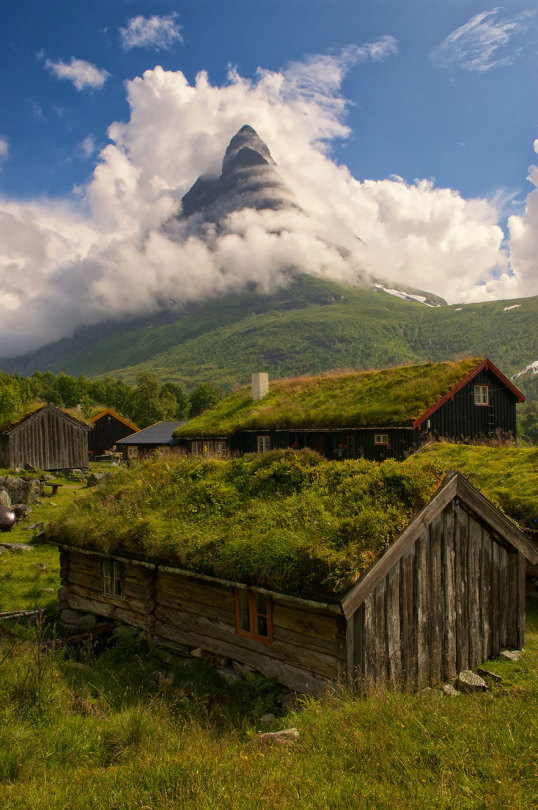
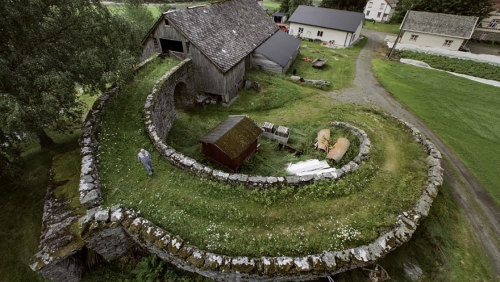


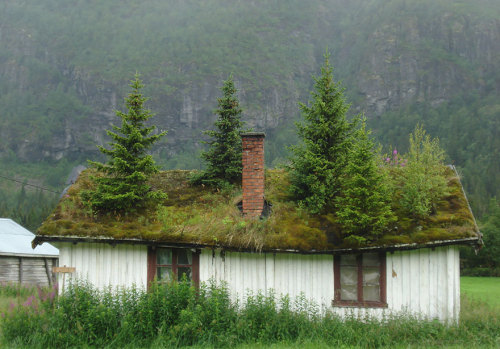
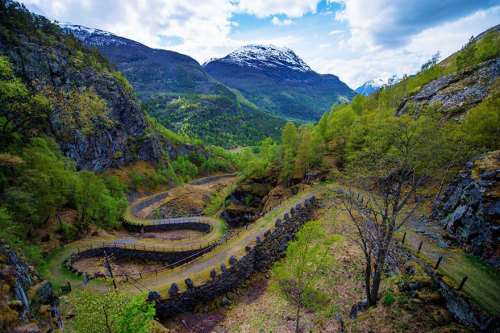

Pics Of Fairy Tale Architecture From Norway
Solarpunk stuff for really broke people
Hey! I’m excited about sustainability, but I’m really poor! So here are some tips if you are also poor.
Some starter tips
There are some things you can take that, while not stealing, people won’t expect you to take. This includes seed collecting from untended gardens, portions of plants that grow in the wild, and soil from parks. This kind of stuff can cut down on expenses.
Seeds can be sold in expensive stores, but can also be taken from produce you buy. Stuff like garlic, onions, green onions, tomatoes, and potatoes are all really easy to reproduce by themselves. Care enough to want organic, heirloom, ect? Go to a farmers market, take the seeds.
Some places also do seed libraries or seed swaps. Keep an eye out for these, especially if you live in or near a big town. Dollar tree also sells seeds in the spring.
A lot of this might involve bending rules. Be sneaky and be careful.
Plants
Ideally, land to plant on in a garden is how food is produced. However if you’re like me you live in a cramped, overpriced studio on the second floor or something.
Yeah containers work. But you need soil for that, and you can’t grab all of it from potting soil bags ripped open at your local garden store. Maybe if you’re patient. But I’m not.
Hydroponic setups work better. One like this requires a plastic bottle, some kind of mesh, and fertilizer.
Fertilizer is, in a lot of places, seen as a bright blue powder sold in gardening stores. You could buy that. I wouldn’t personally. You could steal it from a chain store. But more likely, you could make your own. This article talks about fertilizer from food and food waste. And you can learn about nutritional needs of plants here.
This method could grow herbs, leafy greens, and some vine plants like pole beans, with support. this is not recommended for root plants like potatoes, for a lot of reasons.
Of course if you have access to dirt (not necessarily potting soil) you’re in a better place. Do a few tests, like drainage and composition. PH shouldn’t be a huge deal if you’re digging it up, just find dirt that shit is already growing in. Find a container that can hold a lot of dirt, poke a few good sized holes for water drainage, and plant that shit!
If you manage to bring some of your shit past usable to seed, congrats! Maybe learning about seed collection would help you spread the love to your other friends.
Oh and since there are no bees in your apartment (I hope) you’re gonna need to hand pollinate fruiting plants.
Recycling and reusing
Perhaps the most efficient way of doing this is having friends who also reuse things. You’re not gonna be able to save every candy wrapper most days, and I’m in no position to give up simple luxuries like candy. If you got the money, finding local producers who use compostable/recyclable materials for your little luxuries is nice though. But some of us ain’t got that kinda money. And that’s ok.
As I said before, bottles can be used to make hydroponic gardens. Maybe if you want you can help your friends set up some gardens if you got one too many two liters from Little Caesars.
Plastic bags can be turned into plarn (plastic yarn) and used to knit or crochet. If you feel so inclined you can learn to make cool shit, like reusable shopping bags or something. You could also make a bunch of plarn and outsource this to your friend who likes to knit in exchange for something you wanna do, or are good at.
Egg cartons can be used as seed starters. If you use the cardboard kind, they’ll dissolve into the soil if you break em down a little before planting them.
Aluminum foil can be used to keep algae out of your hydroponic garden, or as an alternative to steel wool.
There’s a lot that I could say, but reuse stuff is popular right now. Ideally, it should be reused into something that has a good use. And remember, sharing your talents and outsourcing things you can’t do is good and pure.
Green Power
This is gonna be a little more expensive. If you got a little money laying around, this could help reduce your power bill or something. But this isn’t gonna be free or next to free.
Phone chargers are an easy one to power. They charge up and don’t vary in their power needs.
This tutorial is, quite frankly, brilliant, and takes away a lot of the barriers to making solar powered stuff (like soldering). They tear apart a garden light to do this. That light could be used for some plants or something.
Wind and hydro are kinda unrealistic for an apartment, but it’s something people do.
Local resources
Food banks, community gardens, borrowing land, pooling resources. Buy an empty plot with your friends and start a community garden.
Fun fact, hammering metal spikes into tree trunks is a federal crime in the US because environmental activists used to do it in the 80s to fuck up chainsaws and logging equipment.




Today I divided up the hardy kiwis I had layered in the fall.
I made four new 1 gallon kiwi plants.
-
 curvyblubird liked this · 8 months ago
curvyblubird liked this · 8 months ago -
 unmeinonagare reblogged this · 11 months ago
unmeinonagare reblogged this · 11 months ago -
 hautecrown liked this · 1 year ago
hautecrown liked this · 1 year ago -
 abackwaterprincess reblogged this · 1 year ago
abackwaterprincess reblogged this · 1 year ago -
 nianna reblogged this · 1 year ago
nianna reblogged this · 1 year ago -
 retheugly liked this · 1 year ago
retheugly liked this · 1 year ago -
 nullicrash liked this · 1 year ago
nullicrash liked this · 1 year ago -
 paradigm-swap reblogged this · 1 year ago
paradigm-swap reblogged this · 1 year ago -
 artygal12 reblogged this · 1 year ago
artygal12 reblogged this · 1 year ago -
 c0nfusedshark reblogged this · 1 year ago
c0nfusedshark reblogged this · 1 year ago -
 bumbling-a-bee reblogged this · 1 year ago
bumbling-a-bee reblogged this · 1 year ago -
 marvelingjules liked this · 1 year ago
marvelingjules liked this · 1 year ago -
 rat-in-a-bath liked this · 1 year ago
rat-in-a-bath liked this · 1 year ago -
 toolipard liked this · 1 year ago
toolipard liked this · 1 year ago -
 cerulian7 liked this · 1 year ago
cerulian7 liked this · 1 year ago -
 hatalien liked this · 1 year ago
hatalien liked this · 1 year ago -
 mantarays49 reblogged this · 1 year ago
mantarays49 reblogged this · 1 year ago -
 walmart-miku reblogged this · 1 year ago
walmart-miku reblogged this · 1 year ago -
 walmart-miku liked this · 1 year ago
walmart-miku liked this · 1 year ago -
 nephriteknight liked this · 1 year ago
nephriteknight liked this · 1 year ago -
 tales-of-fluri reblogged this · 1 year ago
tales-of-fluri reblogged this · 1 year ago -
 the-bear-of-bad-news liked this · 1 year ago
the-bear-of-bad-news liked this · 1 year ago -
 soldotpng reblogged this · 1 year ago
soldotpng reblogged this · 1 year ago -
 soldotpng liked this · 1 year ago
soldotpng liked this · 1 year ago -
 artiblack-blog liked this · 1 year ago
artiblack-blog liked this · 1 year ago -
 shooshzilla liked this · 1 year ago
shooshzilla liked this · 1 year ago -
 its-your-mind reblogged this · 1 year ago
its-your-mind reblogged this · 1 year ago -
 deaddssstuff liked this · 1 year ago
deaddssstuff liked this · 1 year ago -
 ersatzpenguin liked this · 1 year ago
ersatzpenguin liked this · 1 year ago -
 darktherapy liked this · 1 year ago
darktherapy liked this · 1 year ago -
 nanmarie reblogged this · 1 year ago
nanmarie reblogged this · 1 year ago -
 nanmarie liked this · 1 year ago
nanmarie liked this · 1 year ago -
 do-you-think-imspooky liked this · 1 year ago
do-you-think-imspooky liked this · 1 year ago -
 jorts-myfurunbuttered reblogged this · 1 year ago
jorts-myfurunbuttered reblogged this · 1 year ago -
 ledantome reblogged this · 1 year ago
ledantome reblogged this · 1 year ago -
 ledantome liked this · 1 year ago
ledantome liked this · 1 year ago -
 deez-no-relation reblogged this · 1 year ago
deez-no-relation reblogged this · 1 year ago -
 deez-no-relation liked this · 1 year ago
deez-no-relation liked this · 1 year ago -
 mealupa reblogged this · 1 year ago
mealupa reblogged this · 1 year ago -
 mealupa liked this · 1 year ago
mealupa liked this · 1 year ago -
 fruitcage liked this · 1 year ago
fruitcage liked this · 1 year ago -
 camilaleecosas liked this · 1 year ago
camilaleecosas liked this · 1 year ago -
 iheartvelma reblogged this · 1 year ago
iheartvelma reblogged this · 1 year ago -
 iheartvelma liked this · 1 year ago
iheartvelma liked this · 1 year ago -
 kcye liked this · 1 year ago
kcye liked this · 1 year ago -
 love-is-pain-by-bri liked this · 1 year ago
love-is-pain-by-bri liked this · 1 year ago -
 coultticorbu liked this · 1 year ago
coultticorbu liked this · 1 year ago -
 panela-na-janela liked this · 1 year ago
panela-na-janela liked this · 1 year ago